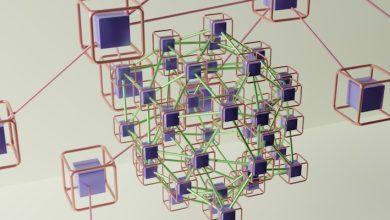Polkadot (DOT): The Blockchain Interoperability Leader

- What is Polkadot and how does it lead blockchain interoperability?
- Exploring the key features that make Polkadot a leader in blockchain interoperability
- How Polkadot’s unique architecture enables seamless communication between different blockchains
- The role of Polkadot in building a connected and scalable blockchain ecosystem
- Why developers and projects are choosing Polkadot for cross-chain compatibility
- The future outlook for Polkadot as the leading blockchain interoperability solution
What is Polkadot and how does it lead blockchain interoperability?
Polkadot is a blockchain platform that aims to enable different blockchains to transfer messages and value in a trust-free fashion. It achieves this by creating a network of blockchains, known as a “multi-chain.” Each blockchain in the Polkadot network has its own unique characteristics and can interact with other blockchains in the network.
One of the key features of Polkadot is its ability to achieve interoperability between different blockchains. This means that blockchains built on Polkadot can communicate and share information with each other, even if they are built using different protocols or technologies. This interoperability is achieved through a system of “parachains” and “bridges” that connect the various blockchains in the network.
By enabling interoperability between blockchains, Polkadot aims to address some of the scalability and compatibility issues that have hindered the growth of the blockchain industry. With Polkadot, developers can build decentralized applications that can interact with multiple blockchains, opening up new possibilities for innovation and collaboration in the blockchain space.
Exploring the key features that make Polkadot a leader in blockchain interoperability
Polkadot stands out as a leader in blockchain interoperability due to its innovative features that set it apart from other platforms in the industry. One key feature that makes Polkadot unique is its ability to connect different blockchains together, allowing them to communicate and share information seamlessly. This interoperability is crucial for creating a more connected and efficient blockchain ecosystem.
Another important feature of Polkadot is its governance model, which allows stakeholders to have a say in the decision-making process. This decentralized approach ensures that the network remains secure and resilient, while also promoting transparency and inclusivity. By giving users a voice in how the platform is run, Polkadot sets itself apart as a truly community-driven project.
Additionally, Polkadot’s scalability solutions make it a top choice for developers looking to build decentralized applications (dApps) that can handle large amounts of transactions. The platform’s sharding technology allows it to process multiple transactions in parallel, increasing speed and efficiency. This scalability is essential for supporting the growing demand for blockchain applications across various industries.
Overall, Polkadot’s combination of interoperability, governance, and scalability make it a leader in the blockchain space. Its unique features address some of the key challenges facing the industry, making it an attractive option for developers, investors, and users alike. As blockchain technology continues to evolve, Polkadot is well-positioned to remain at the forefront of innovation and drive the future of decentralized applications.
How Polkadot’s unique architecture enables seamless communication between different blockchains
Polkadot’s innovative architecture is designed to facilitate seamless communication between various blockchains, making it a leader in blockchain interoperability. Unlike traditional blockchains that operate in isolation, Polkadot allows different chains to exchange information and transactions effortlessly.
One of Polkadot’s key features is its relay chain, which acts as a central hub for connecting different parachains (parallel blockchains) and enabling cross-chain communication. This unique design ensures that data and assets can move between blockchains efficiently, without the need for complex workarounds or intermediaries.
By using a shared security model and a common set of validators, Polkadot ensures the interoperability of its parachains while maintaining a high level of security and scalability. This approach not only streamlines communication between blockchains but also enhances the overall performance and reliability of the network.
With Polkadot, developers can build specialized blockchains that cater to specific use cases and connect them to the wider network, creating a versatile ecosystem of interconnected chains. This flexibility and adaptability make Polkadot an ideal platform for building decentralized applications and enabling new possibilities for blockchain technology.
The role of Polkadot in building a connected and scalable blockchain ecosystem
Polkadot plays a crucial role in creating a connected and scalable blockchain ecosystem by enabling different blockchains to transfer messages and value in a trust-free fashion. This interoperability allows for seamless communication and collaboration between various blockchain networks, enhancing overall efficiency and usability.
By using Polkadot’s relay chain as a central hub for connecting different parachains, developers can create specialized blockchains that can interact with each other while maintaining their own unique features and functionalities. This flexibility and customization make Polkadot a leader in blockchain interoperability, setting new standards for the industry.
Additionally, Polkadot’s sharding technology helps improve scalability by dividing the network into smaller, more manageable parts. This approach increases the overall throughput of the system, allowing for more transactions to be processed simultaneously. As a result, Polkadot can handle a higher volume of transactions without compromising on security or decentralization.
Why developers and projects are choosing Polkadot for cross-chain compatibility
In recent years, Polkadot has emerged as a leading blockchain platform for developers and projects looking to achieve cross-chain compatibility. The appeal of Polkadot lies in its innovative technology that allows different blockchains to communicate and share information seamlessly. This interoperability is crucial for the growth of the blockchain ecosystem as it enables diverse networks to work together effectively.
One of the main reasons why developers and projects are choosing Polkadot is its ability to overcome the challenges of siloed blockchains. By connecting different chains within the Polkadot network, developers can create powerful applications that leverage the strengths of multiple blockchains. This flexibility is a game-changer for projects seeking to build complex decentralized systems that require interaction between various protocols.
Another key factor driving the adoption of Polkadot is its scalability. With Polkadot’s innovative sharding technology, developers can process transactions in parallel across multiple chains, significantly increasing the platform’s capacity. This scalability is essential for high-demand applications that require fast and efficient transaction processing.
Moreover, Polkadot’s governance model is designed to promote transparency and decentralization, making it an attractive choice for developers and projects that value community input and consensus-based decision-making. By giving stakeholders a voice in the evolution of the platform, Polkadot ensures that it remains responsive to the needs of its users and adaptable to changing market conditions.
Overall, the combination of cross-chain compatibility, scalability, and decentralized governance makes Polkadot a compelling option for developers and projects seeking to build innovative blockchain solutions. As the blockchain interoperability leader, Polkadot is poised to play a key role in shaping the future of the decentralized web.
The future outlook for Polkadot as the leading blockchain interoperability solution
The future outlook for Polkadot as the leading blockchain interoperability solution is promising. As the demand for cross-chain compatibility continues to grow, Polkadot is well-positioned to capitalize on this trend. Its innovative design allows different blockchains to communicate and share information seamlessly, creating a more interconnected and efficient ecosystem. This has made Polkadot a popular choice among developers looking to build scalable and interoperable decentralized applications.
Additionally, Polkadot’s governance model, which allows token holders to vote on network upgrades and changes, ensures that the platform can adapt to meet the evolving needs of the blockchain space. This flexibility and responsiveness set Polkadot apart from other interoperability solutions, making it a top choice for projects looking to future-proof their technology.
Looking ahead, Polkadot is set to release several key upgrades, including parachain functionality and the introduction of decentralized finance (DeFi) capabilities. These developments will further enhance Polkadot’s position as a leader in blockchain interoperability and open up new opportunities for innovation within the ecosystem.
Overall, the future looks bright for Polkadot as it continues to solidify its place as the go-to solution for blockchain interoperability. With its unique technology, strong community support, and ongoing development efforts, Polkadot is well-equipped to lead the way towards a more connected and efficient blockchain future.



